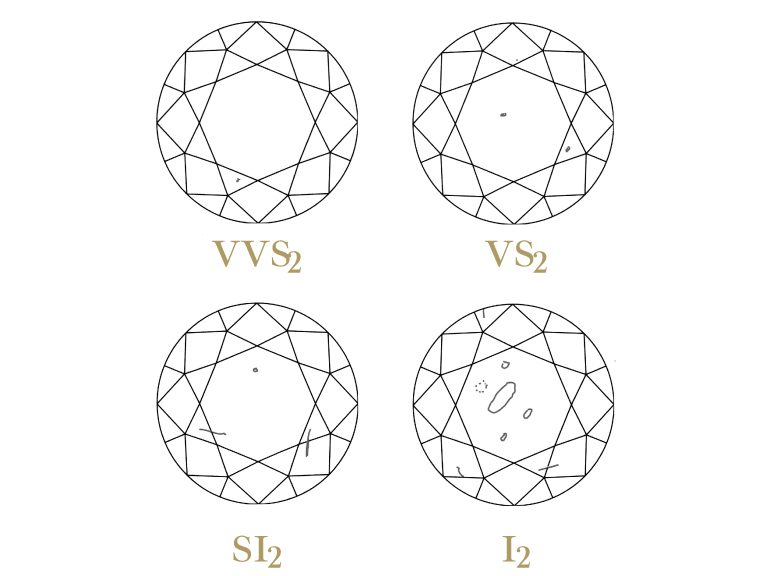Every diamond is unique. Each reflects the story of its arduous journey from deep inside the earth to a cherished object of adornment. Yet all diamonds share certain features that allow us to compare and evaluate them.
These features are called the 4Cs.
GIA has been entrusted with grading some of the world’s most famous diamonds, and brings the same unmatched expertise to grading yours. Independent and non profit. GIA is considered the final word on a diamond’s authenticity and quality. GIA developed the 4C’s and the International Diamond Grading System, the standard used round the globe.
GIA screens every gemstone to identify laboratory grown diamonds, simulants and know treatments. Expert gemologists examine each diamond under controlled lighting and viewing conditions in order to provide the most rigorous assessments of a diamond’s 4Cs.
Every GA grading report contains these assessments along with additional along with additional descriptive information and state-of-the-art security features. Buying a diamond is a momentous decision. GIA reports let you make it with confidence.
Although many people think of gem quality diamonds as colourless, truly colourless diamonds are actually very rare. Most diamonds used in jewellery are nearly colourless with tints of yellow or brown.
Colour grades are determined by comparing each diamond to a master set. Each letter grade represents a range of colour and is a measure of how noticeable a colour is.
Fluorescence Some diamonds can emit a visible light when exposed to ultraviolet radiation, but fluorescence is not a factor in determining colour or clarity grades. However a description of its strength and colour is provided on GIA Reports as an additional identifying characteristic.


The GIA Clarity Scale included eleven clarity grades ranging from Flawless to I3.
Because diamonds form under tremendous heat and pressure, it is extremely rare to find a diamond that lacks any internal and external characteristics. These characteristics are a by-product of its formation and help gemologists separate natural diamonds from
laboratory-grown diamonds, simulants and identify individual stones.
The GIA Cut Scale ranges from Excellent to Poor.
A polished diamond’s beauty lies in its complex relationship with light. The magnificent display you see is made up of three attributes:
A diamond’s proportions affect its light performance, which in turn affects its beauty
and overall appeal. Diamonds with fine proportions, symmetry, and polish optimise
their interaction with light, and have increased brightness, fire and scintillation
GIA assesses these factors for standard round brilliant diamonds in the D-to Z colour range.


One carat equals 200 milligrams in weight.
For diamonds under one carat, each carat is divided into 100 points – similar to pennies in a pound. 0.75ct = 75points, 1/2ct = 50 points.
The 4Cs provide a way to objectively compare and evaluate diamonds, but numbers alone can’t describe a diamond’s mysterious and captivating beauty – for that, you will have to visit your local jeweller to see one for yourself.

If you would like further information on any jewellery piece you have seen on our website, or if you have any other questions please use our contact form by clicking below.